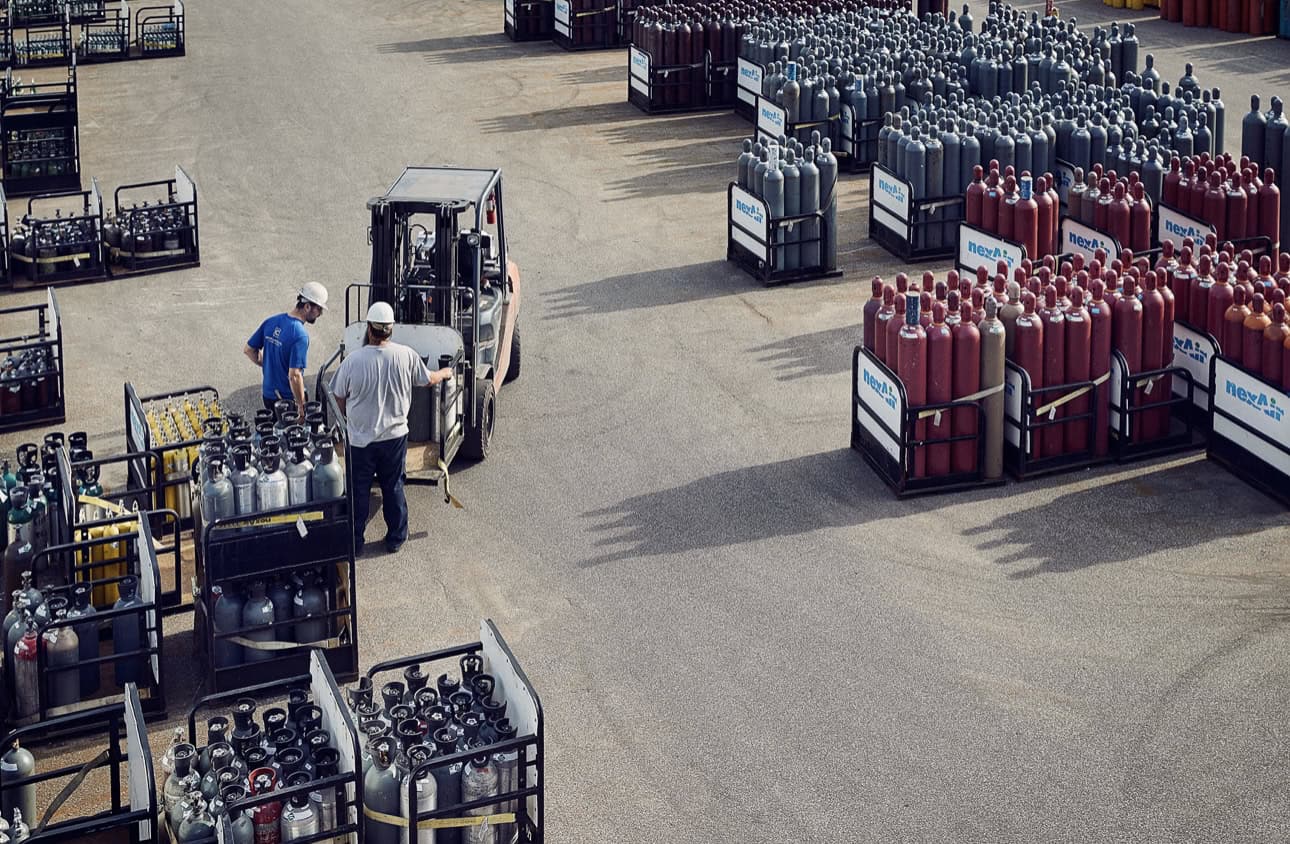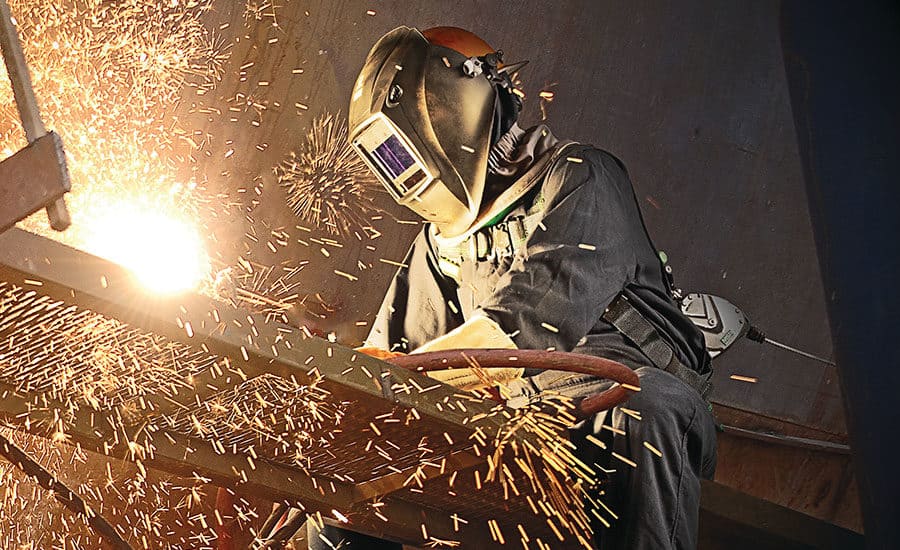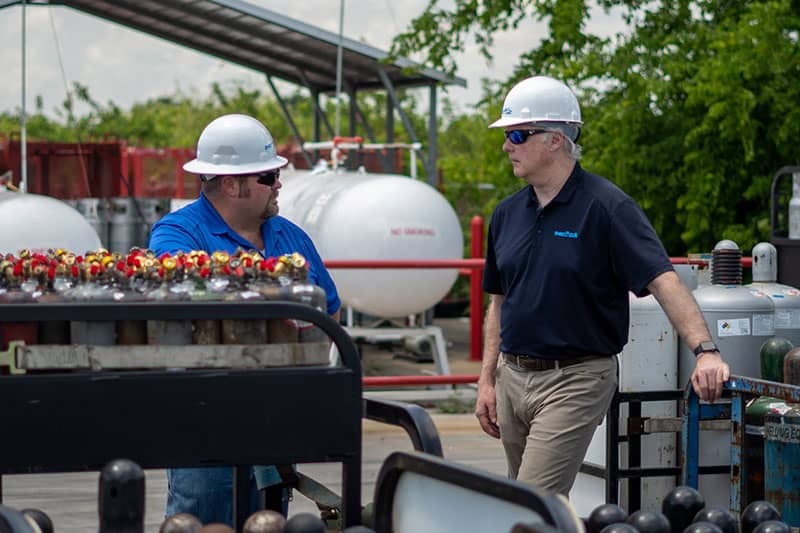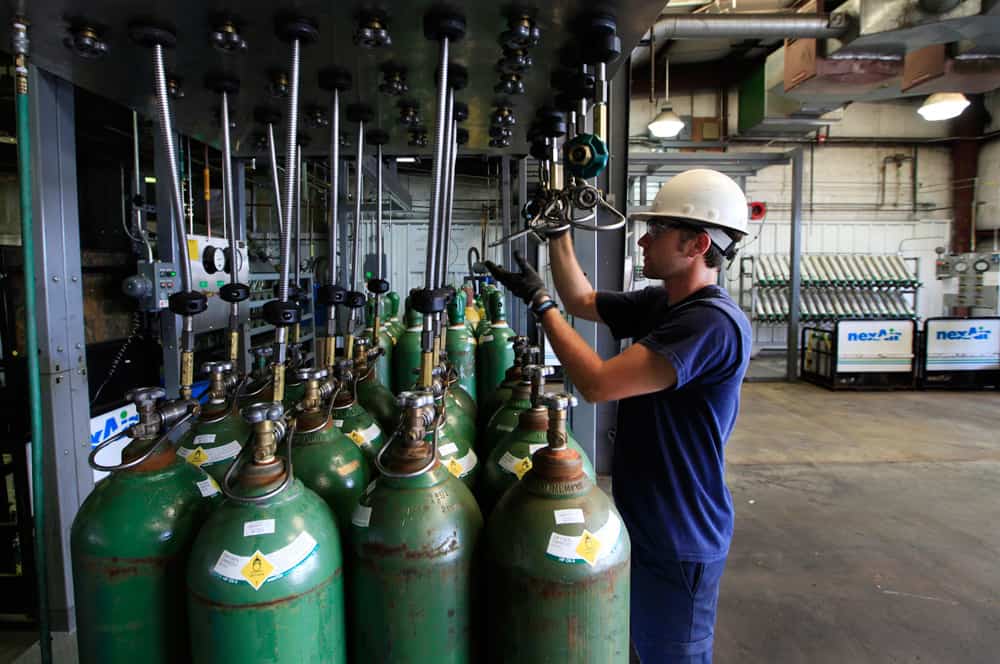nexAir KnowHow: Understanding Gas Cylinder Sizes and How to Choose the Right One
Selecting the proper gas cylinder size significantly impacts both productivity and operating costs in welding operations. Too small, and frequent changeovers interrupt workflow. Too large, and you’re paying for gas storage that exceeds your actual needs. The nexAir team regularly helps fabricators optimize their gas supply systems based on actual usage patterns rather than guesswork or outdated practices.
Common Industrial Gas Cylinder Designations
Industrial gas cylinders come in standardized sizes with letter designations that indicate their capacity. While actual dimensions vary slightly between manufacturers, the volume classifications remain consistent across the industry.
Size “T” cylinders represent the smallest common industrial option, typically holding around 330 cubic feet of argon. These compact cylinders work well for occasional TIG welding or in mobile repair applications where portability matters more than extended run time.
Moving up the scale, “S” cylinders offer approximately 150 cubic feet capacity, while “R” cylinders provide about 300 cubic feet. The widely-used “K” size holds roughly 330 cubic feet of gas, representing the standard workhorse in many welding shops with moderate consumption rates.
For high-volume operations, “T” cylinders deliver approximately 330 cubic feet, with jumbo cylinders holding up to 450 cubic feet of gas. These larger options significantly reduce changeout frequency in production environments.
Matching Cylinder Size to Consumption Patterns
Choosing the right cylinder size requires understanding your actual gas consumption rate. A single MIG welder running at 25 CFH (cubic feet per hour) will consume approximately 200 cubic feet during an 8-hour shift of steady welding.
In practice, most welders achieve 25-40% arc-on time during a typical shift, with the remainder spent on part handling, setup, and inspection. This means actual gas usage often ranges from 50-80 cubic feet per welder per day in general fabrication settings.
Tracking cylinder depletion over time provides accurate consumption data for your specific operation. This information helps determine whether smaller cylinders with frequent deliveries or larger cylinders with less frequent replacements provide a more economical gas supply.
Weight and Handling Considerations
Cylinder size affects not just gas capacity but also safety and handling requirements. A full “K” cylinder weighs approximately 130 pounds, creating significant manual handling challenges for many workers.
Some shops automatically select the largest available cylinders without considering the practical aspects of changeouts. If cylinder exchanges require manual handling, smaller sizes often prove more practical despite more frequent replacements. Proper cylinder carts become essential safety equipment when working with larger sizes.
Facilities with adequate material handling equipment and storage space can take advantage of larger cylinders. Those with limited space or without powered handling equipment often benefit from smaller cylinders despite slightly higher per-cubic-foot costs.
Liquid Cylinders for High-Volume Applications
When gas consumption exceeds the practical capacity of high-pressure cylinders, liquid cylinders offer a compelling alternative. These specialized containers store gases in liquid form, dramatically increasing capacity within a similar footprint.
A standard liquid cylinder holds the equivalent of 5-10 high-pressure cylinders, significantly reducing changeout frequency. Their built-in pressure control systems deliver consistent flow without external regulation, simplifying gas distribution systems.
For operations consuming multiple high-pressure cylinders weekly, liquid options often reduce both handling requirements and overall gas costs. This transition represents one way nexAir helps customers Forge Forward with more efficient gas delivery systems.
Beyond Size: Purity Requirements and Special Applications
Cylinder selection involves more than just capacity considerations. Gas purity requirements for specialized applications often dictate cylinder type regardless of size preferences.
Certain industries, including medical device manufacturing, semiconductor production, and specialized food packaging, require certified high-purity gases. These specialty products come in designated cylinders with specific valve configurations to prevent accidental contamination.
Our team applies expert KnowHow™ when matching cylinder specifications to both volume requirements and purity needs. This comprehensive approach ensures you receive the appropriate gas container for your specific application without paying for unnecessary features or capacity.
Contact nexAir today to discuss your gas usage patterns and explore cylinder options that match your actual needs. We’ll help analyze your consumption data and recommend the most cost-effective cylinder sizes for your specific operations.
Don't see what you're looking for?
Everything we offer is a click away and it will arrive before you know it.



